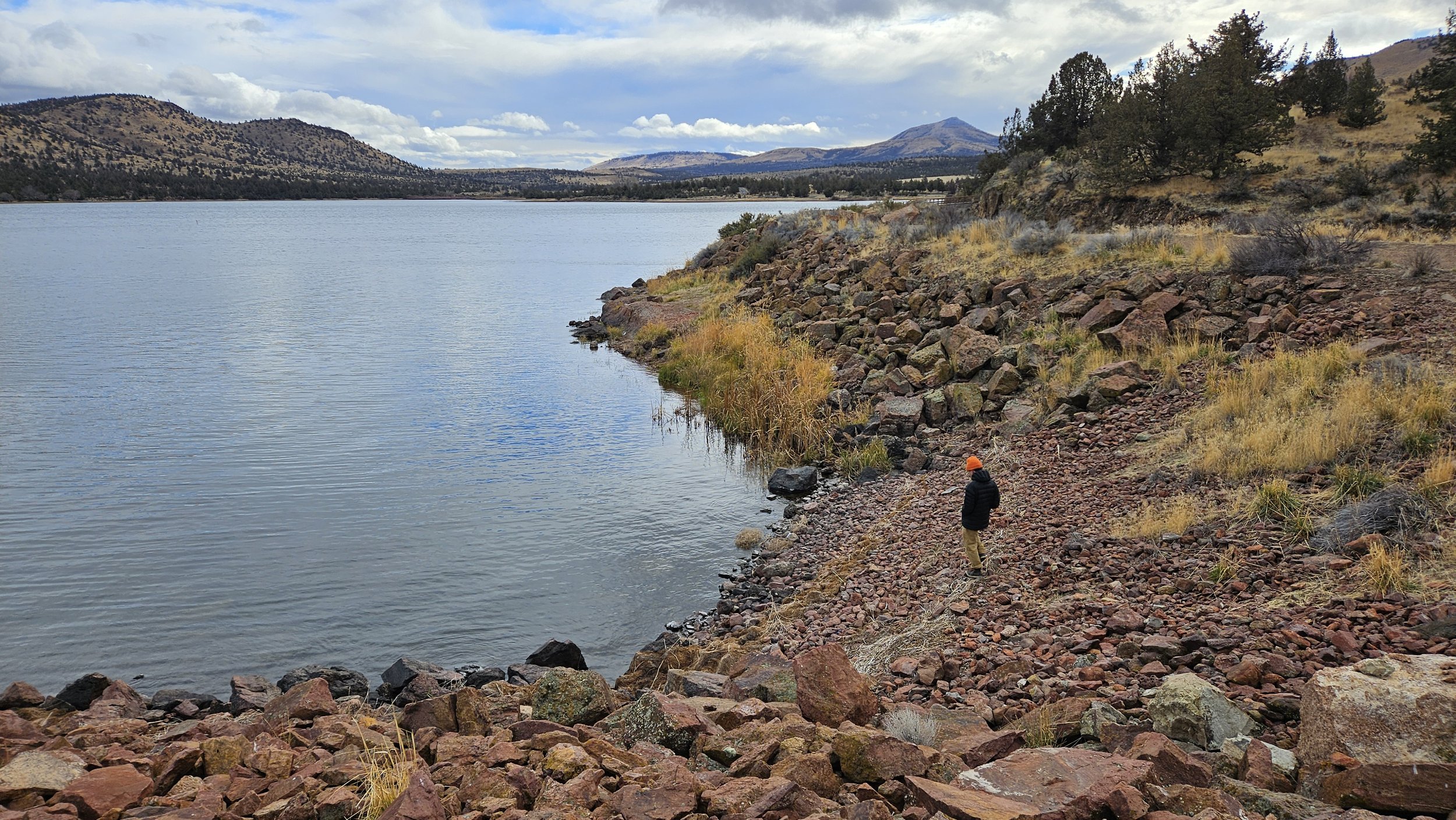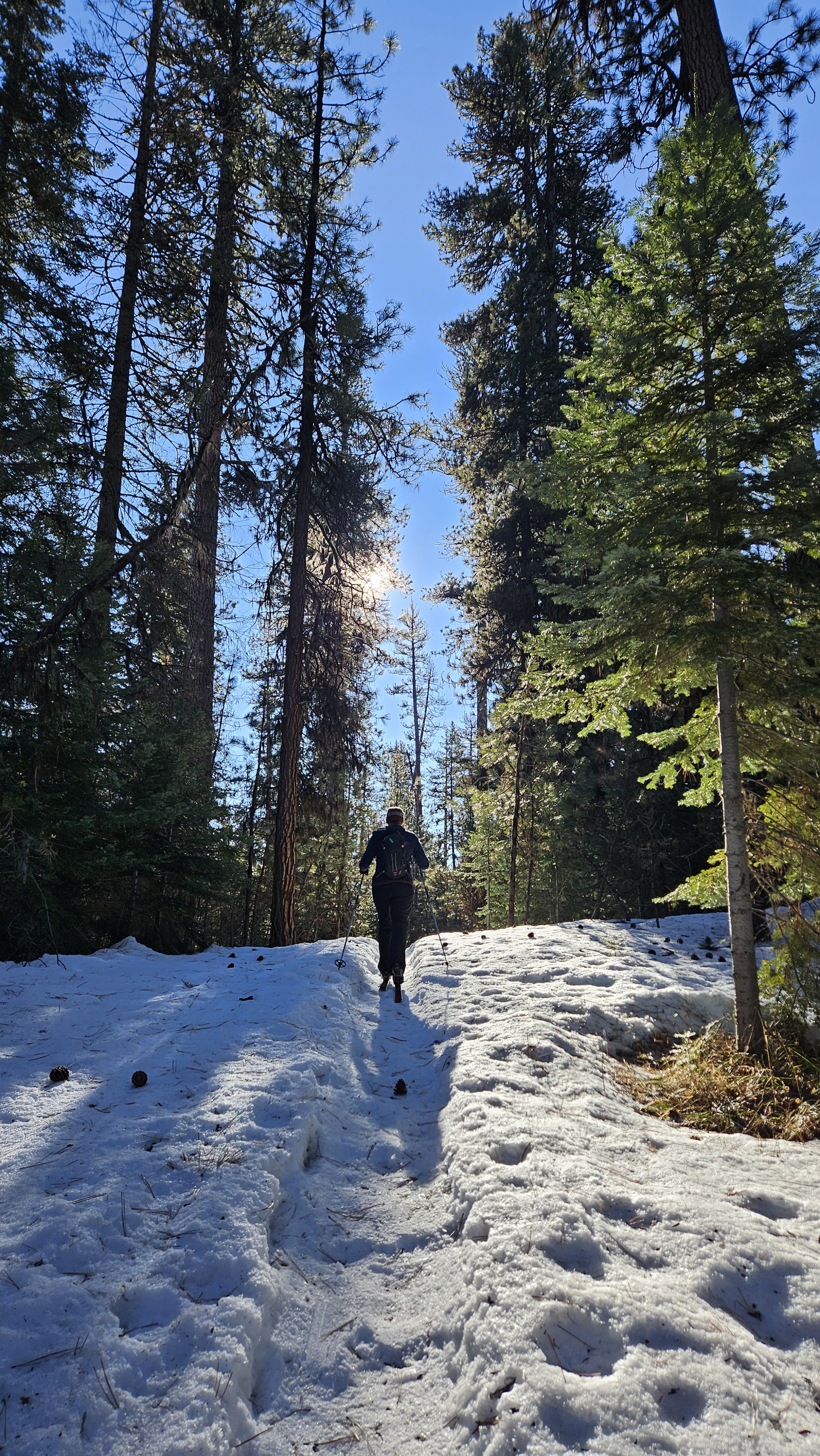Haystack and Back
Head out for a scenic cycle around Haystack Butte
By Lace Thornberg, Communications Director
-
If going in the winter, check conditions before you head out, and stay flexible! Or, bring along a fly rod and spend some time fishing at the reservoir on warmer days.
-
Enjoy epic views of Smith Rock, Gray Butte and our beautiful expanses of open, rural land in Deschutes and Jefferson counties.
-
🚲
You might not have thought much about irrigation while biking before, but did you know that, in the Deschutes Basin, the North Unit Irrigation District is the last in line to receive water and some years it only receives a fraction of the water needed? By necessity, North Unit is the most efficient irrigation district in the Basin and can offer a model that other irrigation districts could follow.
Keep The Haystack in mind for a sunny, mild winter day. This 20-mile gravel bike ride, described in detail on the Dirty Freehub website, travels from Peter Skene Ogden State Scenic Viewpoint, up to Haystack Reservoir, and down through the Crooked River National Grasslands.
One of the ride’s grandest views comes right at the start (and end), as you stare down a 300-foot-deep, 450-foot-wide basalt canyon at the Crooked River, a tributary of the north-coursing Deschutes River.
Immediately after that dramatic view, you face the ride’s crux: crossing Highway 97. As you stand on the shoulder, waiting for your window of opportunity to cross four lanes of north and south bound traffic, imagine the deer and other wildlife who would like to cross through this area to access different habitats if they could.
Under blue skies, the Crooked River National Grasslands is textbook bucolic.
Once across, you’ll reach a gate. Lift your bike over, then climb over yourself and drop down to the other side to catch the terminus of the SW Culver Highway. (Not interested in highway crossing and gate hopping? Pick up the route on the east side of 97 instead; a wide stretch of gravel at the SW Norris Lane and SW Culver Highway intersection would be a serviceable parking spot).
This quiet stretch of road offers wide open views of snowcapped Cascade volcanoes to the west and the craggy hills of the Crooked River National Grasslands to the east.
In your foreground, you’ll see irrigated farm fields. The farms in North Unit Irrigation District are both the most water-efficient and the most profitable farm operations in the region. They provide a useful model that other irrigation districts in the region should look to if we want to conserve water and grow local crops.
As you get into the rhythm of the road, you could easily ride past the right-hand turn onto the unnamed gravel road/trail suggested on Dirty Freehub’s route map. Should you (also) find yourself reaching Highway 97, backtrack a quick half-mile to SW King Lane and take that fairly smooth gravel road west to Haystack Reservoir.
Haystack Reservoir is a good spot to think about water conservation. Of all the water on the earth, only 3% is considered freshwater, only 0.4% of that water is usable and drinkable water, and that must be shared among all our planet’s inhabitants. Every cubic foot of water we can conserve today makes a difference.
At the T intersection with Southwest Haystack Drive, turn left. The Dirty Freehub Haystack route goes right at this intersection, but you’re going to head left first for a closer look at Haystack Reservoir. You’ll soon pass by Haystack Reservoir Campground West, and, less than a quarter mile more, turn left to reach the North Fishing Pier Day Use Area.
Managed by the Crook County Parks and Recreation Department, Haystack Reservoir covers just over 200 acres. The area provides scenic views of Mount Jefferson and the Three Sisters, fishing year-round, and camping April through October.
Near the fishing pier, you’ll find a picnic table set on chunky lichen-crusted basalt, flanked by junipers.
Addressing water waste in the Deschutes Basin, where wildlife species are blinking out and commercial farmers in Jefferson County are being forced to leave fields fallow, is a top priority for LandWatch. During a LandWatch staff site visit, we learned about various steps the North Unit Irrigation District has taken to improve their water management efficiency. Communications Manager Alex Hardison and Wild Lands and Water Program Director Jeremy Austin even got to venture down into a recently constructed irrigation canal.
If you’re interested in water conservation, continue north on Southwest Haystack Drive a half mile to reach the South Unit Main Canal, just shy of the intersection with Southwest Jericho Lane, and check out the large concrete intake structure designed to remove debris from the canal system.
As the most junior irrigation district in the Deschutes Basin, North Unit Irrigation District is last in line to receive water. Some years it only receives a fraction of the water needed to grow a crop. By necessity, North Unit is the most efficient irrigation district in the Basin and its approach to managing water provides a model that LandWatch hopes other irrigation districts in the Deschutes Basin will follow.
From Haystack Reservoir, continue down the paved Haystack Reservoir Rd. The pavement ends right before the road veers south and gives way to the gravel portion of this adventure. Enjoy the ~5.5 mile ride to the Henderson OHV Staging Area. For bikers, the best time to ride through this area will be when it is closed to motorized vehicles from Dec 1 to Mar 31. This is the “winter range closure” that the Ochoco National Forest and Crooked River Grasslands implement to help mule deer and elk utilize their winter range lands without disturbance.
When you’re ready, double back and continue past the Corrals Trailhead. From here, you’ll bike downhill and soon return to pavement on SW Park Lane where you’ll enjoy a cool, not-as-often-seen view of Smith Rock’s north side.
When you attempt this ride, be sure to go on a Wednesday through Sunday and be back to your car before 4 pm. That way you can pair your bike ride with a visit to Maragas Winery to enjoy a glass of wine made from locally grown grapes and a delightful array of snacks in a space that is both cavernous and cozy.
Whenever recreating outside, but especially in winter, check conditions before you head out, stay flexible, keep an eye on the weather, and adjust your plans as needed.
Blue skies one moment and thick fog the next. In winter, outdoor plans will often need to be adjusted.








